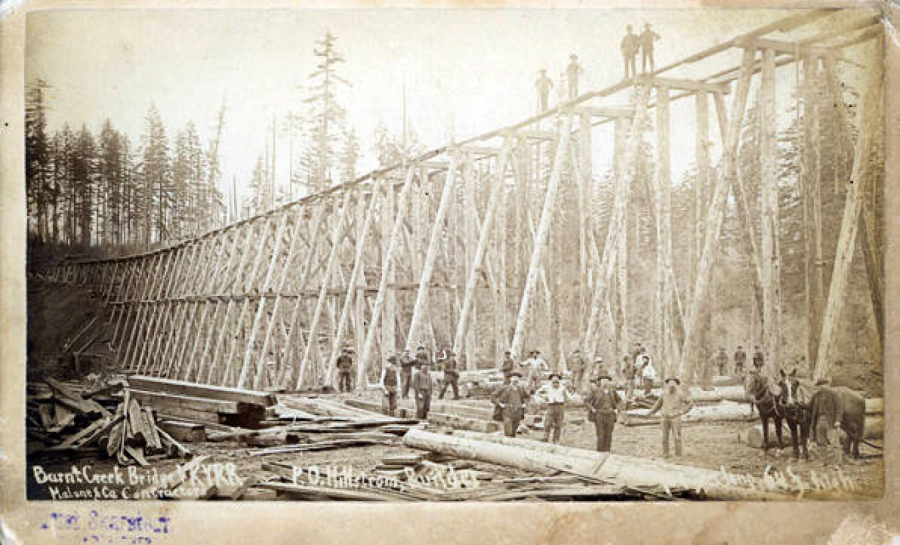A fire raging westward from Camas toward Fort Vancouver in 1844 troubled James Douglas. It hungrily gobbled timber, pasture and farmland from Camas to Lake Vancouver for four days. It also burned a Hudson Bay Company bridge. Douglas wrote to Dr. John McLoughlin about how the blaze alarmed him.
Reporting to McLoughlin, Douglas described how thankful he was that the devastation wasn’t worse. It was with the “greatest sense of gratitude to Heaven” that the company’s “vast amount of valuable property” remained untouched, he said. Hudson Bay Company employees saved a sawmill in the blaze’s path by dousing it with “large amounts of water.” He found the company’s losses insignificant compared to what they might have been.
To move crops and livestock to the fort, the Hudson Bay Company built a bridge crossing the creek 2 1/2 miles north of Fort Vancouver along the old Fourth Plain Road in 1836. In those days, the waterway was known as Bridge River or Bridge Creek, clearly denoting the importance of the crossing. The creek separated Fort Vancouver from its fields and pastures. The burn, Douglas said, followed along the creek burning pastures, threatening livestock, charring crops and destroying the company’s bridge. So, this might be the source of the Burnt Bridge Creek name.
Someone crudely constructed a second bridge over that very same creek later at about the same place. It proved useful, and people crossed it often. That little bridge also burned between 1860 and 1865. However, it was so needed that it was replaced twice, once in 1895 and again in 1928. Each rebuild accommodated the increasing traffic and the growing number of automobiles cruising along Clark County’s continuously improving roads.



